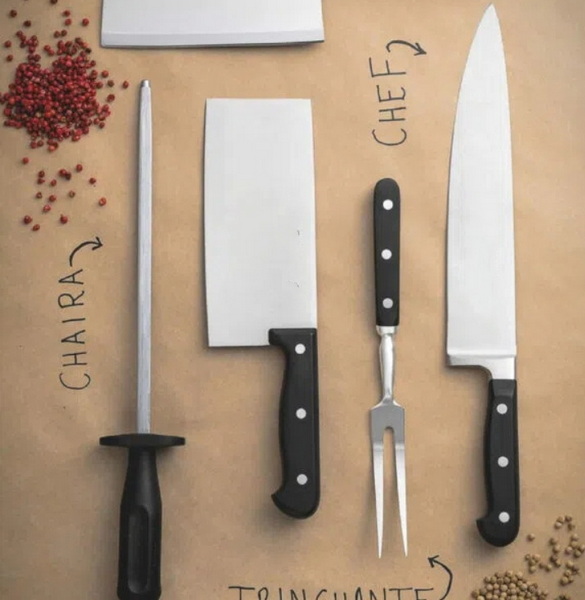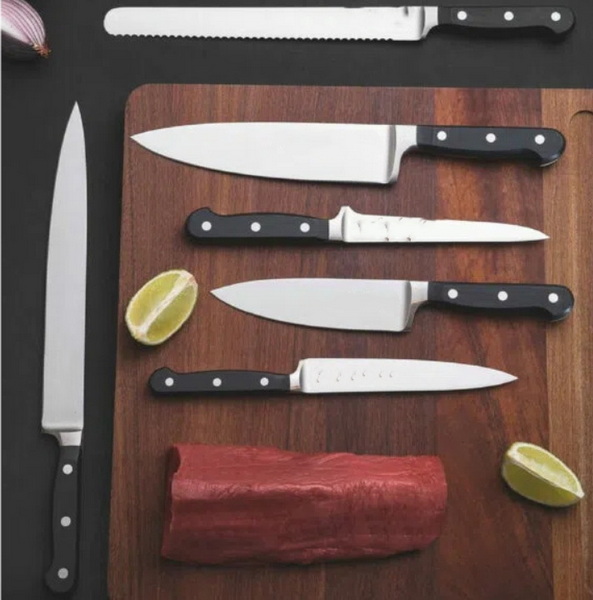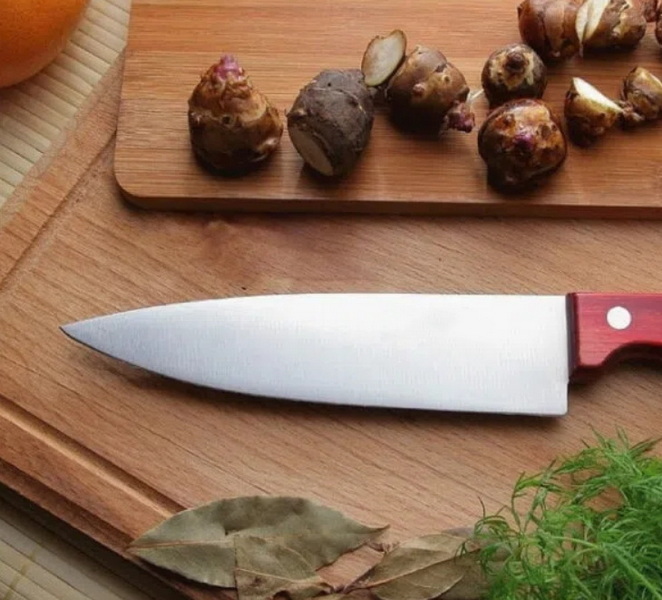

Views: 500 Author: sales@insightknife.com.cn Publish Time: 2025-01-07 Origin: Site








Content Menu
● Understanding Knife Sharpness
>> The Importance of Sharp Knives
>> What Causes Knife Dullness?
>> Whetstones
>> Honing Rods
>> Using an Electric Sharpener
>> Safe Storage
● Frequently Asked Questions regarding Sharpen And Maintain Knives
>> 1. How often should I sharpen my knives?
>> 2. What is the difference between sharpening and honing?
>> 3. Can I use a whetstone for all types of knives?
>> 4. Is it safe to put my knives in the dishwasher?
>> 5. What is the best way to store knives?
Maintaining a sharp knife is essential for any kitchen enthusiast or professional chef. A well-maintained knife not only enhances the efficiency of food preparation but also ensures safety while cutting. This article will delve into the various methods of sharpening and maintaining knives, providing a comprehensive guide to keep your blades in optimal condition.
A sharp knife is crucial for several reasons. Firstly, it allows for cleaner cuts, which is particularly important for presentation in culinary dishes. When ingredients are cut cleanly, they retain their juices and textures, leading to better flavor and aesthetics. Secondly, a sharp knife requires less force to cut through food, reducing the risk of slipping and causing accidents. This is especially important when working with slippery ingredients like tomatoes or onions. Lastly, maintaining sharp knives can prolong their lifespan, saving you money in the long run. A well-cared-for knife can last for years, making it a worthwhile investment in your kitchen tools.
Knives become dull due to various factors, including regular use, improper storage, and exposure to hard surfaces. When a knife is used, the edge can become rounded or chipped, leading to a dull blade. This dullness can be exacerbated by cutting on hard surfaces like glass or stone, which can damage the blade. Additionally, storing knives in drawers without protection can cause them to collide with other utensils, further dulling the edge. Understanding these factors can help you take proactive steps to maintain your knives and keep them sharp for longer.

Whetstones, also known as sharpening stones, are one of the most effective tools for sharpening knives. They come in various grits, which determine the level of sharpness achieved. A lower grit (coarse) is used for repairing damaged edges, while a higher grit (fine) is used for honing and polishing the blade. Using a whetstone requires some skill, as it involves maintaining the correct angle and applying consistent pressure. However, the results are often superior to other sharpening methods, providing a razor-sharp edge that enhances cutting performance.
Honing rods, or honing steels, are used to realign the edge of a knife rather than remove material. Regular honing can keep a knife sharp between sharpenings, making it an essential tool for maintenance. Unlike sharpening, which removes metal from the blade, honing simply straightens the edge, making it an ideal practice to incorporate into your routine. Many chefs recommend honing their knives before each use to ensure optimal performance.
Electric sharpeners offer a quick and convenient way to sharpen knives. They typically have built-in guides to ensure the correct angle is maintained during sharpening. However, they can remove more material than necessary if not used carefully. While electric sharpeners are user-friendly and efficient, they may not provide the same level of precision as manual methods. It's essential to choose a high-quality electric sharpener to avoid damaging your knives.
Manual sharpeners are compact devices that often feature two slots: one for coarse sharpening and another for fine honing. They are user-friendly and suitable for those who may not be comfortable using a whetstone. Manual sharpeners can be a great option for home cooks who want a quick and effective way to maintain their knives without the learning curve associated with whetstones. However, it's important to follow the manufacturer's instructions to achieve the best results.
Preparation: Soak the whetstone in water for about 10-15 minutes before use. This helps to lubricate the stone and prevent damage to the blade. A well-soaked stone will create a slurry that aids in the sharpening process, allowing for smoother strokes and better results.
Angle: Hold the knife at a 20-degree angle against the stone. This angle is ideal for most kitchen knives. Maintaining this angle consistently is crucial for achieving a sharp edge.
Sharpening: Start at the heel of the blade and move towards the tip, applying light pressure. Repeat this motion several times on one side before switching to the other side. It's important to use long, even strokes to ensure that the entire edge is sharpened uniformly.
Finishing: After sharpening both sides, use the finer grit of the whetstone to polish the edge. This step enhances the sharpness and smoothness of the blade. Polishing not only improves cutting performance but also helps to prevent rust and corrosion.

Positioning: Hold the honing rod vertically with the tip resting on a stable surface. This position provides stability and control during the honing process.
Angle: Place the knife at a 20-degree angle against the rod. This angle is crucial for effective honing.
Honing: Starting at the base of the blade, draw the knife down the rod towards the tip, applying light pressure. Repeat this motion on both sides of the blade. Honing should be done with a gentle touch, as excessive pressure can damage the edge.
Setup: Place the electric sharpener on a stable surface and plug it in. Ensure that the sharpener is clean and free of debris before use.
Sharpening: Insert the knife into the designated slot, following the manufacturer's instructions. Move the knife through the sharpener, allowing the machine to do the work. It's important to avoid forcing the knife through the sharpener, as this can lead to uneven sharpening.
Check Sharpness: After sharpening, test the knife on a piece of paper or a tomato to check for sharpness. A well-sharpened knife should slice through paper cleanly and easily.
Honing should be done regularly, ideally before each use. This simple step can significantly extend the time between sharpenings. By honing your knife regularly, you can maintain its edge and ensure that it performs at its best. Many professional chefs make honing a part of their routine, emphasizing its importance in knife maintenance.
After using your knives, wash them by hand with warm, soapy water. Avoid placing them in the dishwasher, as the high heat and harsh detergents can damage the blade and handle. Proper cleaning not only helps to maintain the knife's appearance but also prevents the buildup of bacteria and food residue. After washing, dry the knife immediately with a soft cloth to prevent rusting.
Store knives in a way that protects their edges. Magnetic strips, knife blocks, or sheaths are excellent options. Avoid storing knives loose in drawers, as this can lead to dulling and damage. Proper storage not only protects the blades but also ensures safety in the kitchen. A well-organized knife storage solution can also enhance your cooking experience by making it easier to access the tools you need.
Depending on usage, knives should be sharpened every few months. Professional chefs may need to sharpen their knives more frequently, while home cooks can often go longer between sharpenings. Keeping track of your knife's performance can help you determine when it's time for sharpening. If you notice that your knife is struggling to cut through food, it may be time to sharpen it.
Sharpening and maintaining knives is an essential skill for anyone who cooks. By understanding the tools available and the techniques for sharpening, you can ensure that your knives remain sharp and effective. Regular maintenance, including honing and proper cleaning, will prolong the life of your knives and enhance your cooking experience. With these practices, you can enjoy the benefits of sharp knives, making food preparation safer and more enjoyable. Investing time in knife care not only improves your culinary skills but also fosters a deeper appreciation for the tools that make cooking a joy.

You should sharpen your knives every few months, depending on how frequently you use them. Professional chefs may need to sharpen their knives more often, while home cooks can often go longer between sharpenings. Regular honing before each use can also help maintain the edge.
Sharpening removes material from the blade to create a new edge, while honing realigns the existing edge without removing material. Honing should be done regularly to keep the knife sharp between sharpenings.
Yes, whetstones can be used for most types of knives, including kitchen knives, pocket knives, and even some specialty knives. However, the technique and angle may vary slightly depending on the knife type.
No, it is not safe to put knives in the dishwasher. The high heat and harsh detergents can damage the blade and handle, leading to dullness and potential rust. It is best to wash knives by hand and dry them immediately.
The best ways to store knives include using a magnetic strip, a knife block, or protective sheaths. Avoid storing knives loose in drawers, as this can lead to dulling and damage to the blades. Proper storage not only protects the knives but also enhances safety in the kitchen.